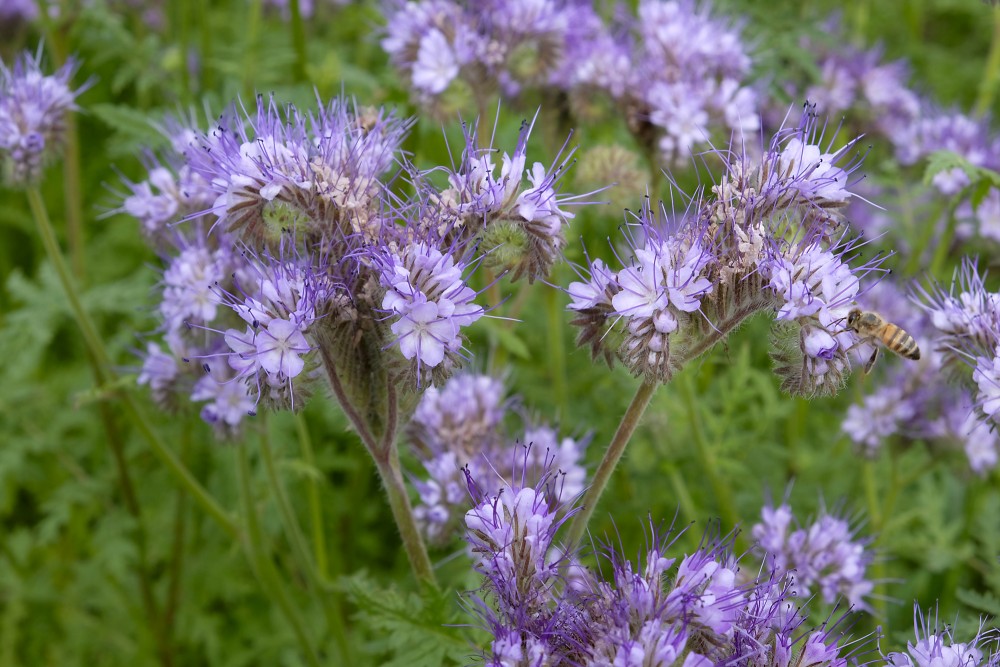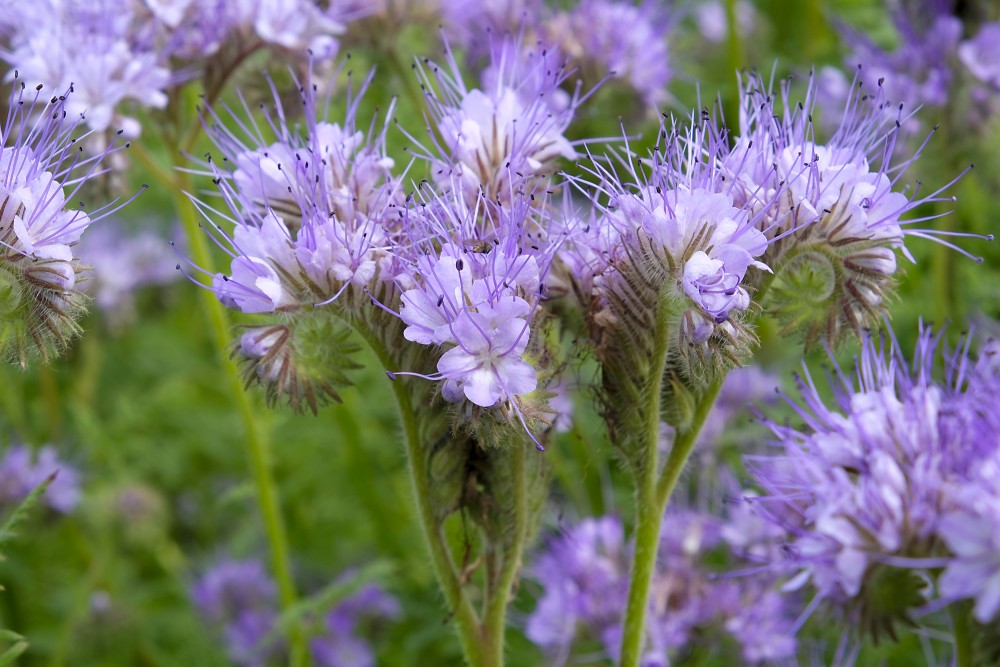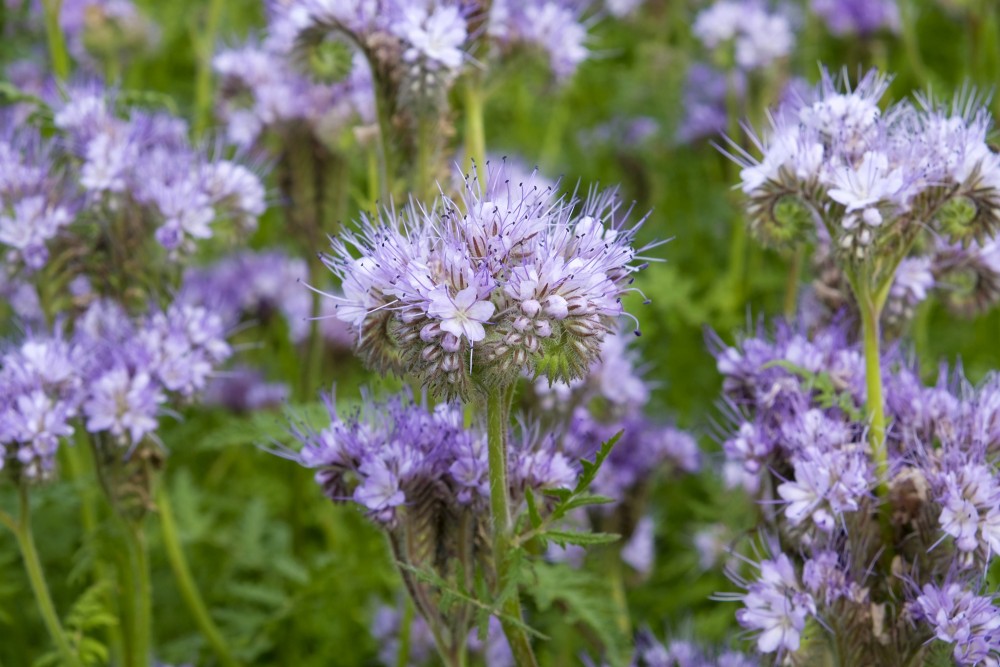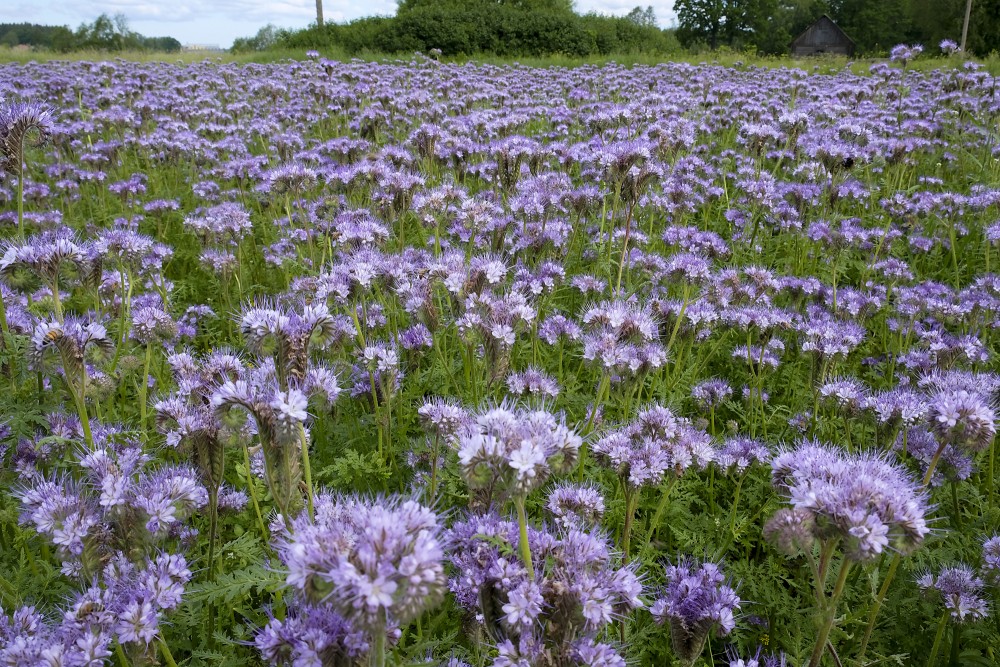Phacelia tanacetifolia (Lacy phacelia)
Phacelia tanacetifolia is a species of flowering plant in the borage family Boraginaceae, known by the common names lacy phacelia, blue tansy or purple tansy.
| Phacelia tanacetifolia | |
| Kingdom: | Plantae |
| Clade: | Tracheophytes |
| Clade: | Angiosperms |
| Clade: | Eudicots |
| Clade: | Asterids |
| Order: | Boraginales |
| Family: | Boraginaceae |
| Genus: | Phacelia |
| Species: | P. tanacetifolia |
Etymology
Phacelia is derived from Greek and means 'bundle', in reference to the clustered flowers, while tanacetifolia means 'with leaves resembling those of Tanacetum.'
Description
Phacelia tanacetifolia is an annual that grows erect to a maximum height near 100 centimeters (39.37 inches) with none to a few branches. The wild form is glandular and coated in short stiff hairs. The leaves, 20–200 millimetres (0.8–7.9 in), are mostly divided into smaller leaflets which are deeply and intricately cut into toothed lobes, giving them a lacy appearance. The dense and hairy inflorescence is a one-sided curving or coiling cyme of bell-shaped flowers in shades of blue and lavender. Each flower is just under a centimeter long and has protruding whiskery stamens.
The seeds are "negatively photoblastic", or photodormant, and will only germinate in darkness.
Range and uses
Beneficial insects
Phacelia tanacetifolia is native to Southwestern United States and northwestern Mexico. It is most common in the deserts of southern California below 5,000 feet (1,500 m), but may be occasionally found at much higher elevations.
It is used outside its native range in agriculture as a cover crop, a bee plant, an attractant for other beneficial insects, as a green manure and an ornamental plant. It is planted in vineyards and alongside crop fields, where it is valued for its long, coiling inflorescences of nectar-rich flowers which open in sequence, giving a long flowering period. It is a good insectary plant, attracting pollinators such as honey bees.
Biological pest control
It is also attractive to hoverflies (family Syrphidae), which are useful as biological pest control agents because they eat aphids and other pests.
en.wikipedia.org







